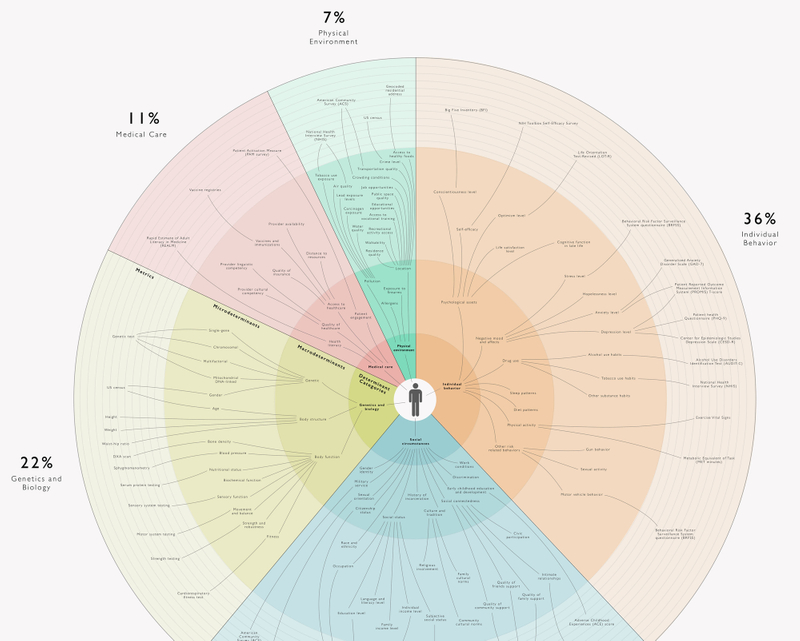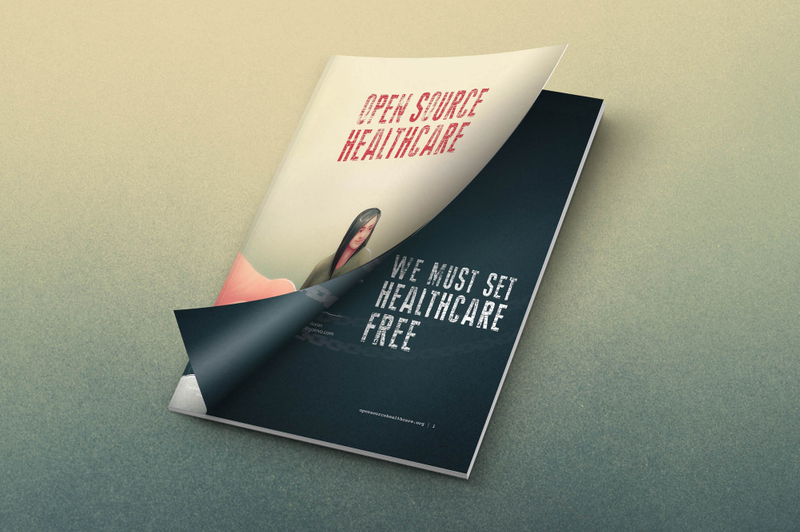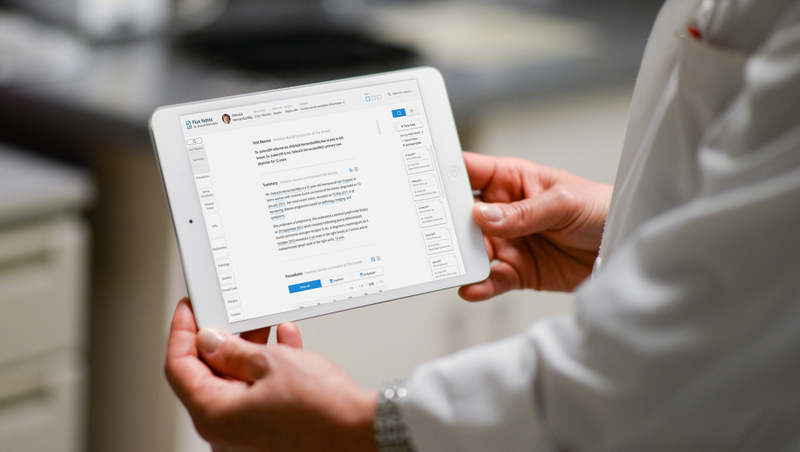
Health Data Capture at the Point of Care
for MITRE Corporation
Problem
Providers rarely capture high-quality, standardized oncological data, leading to 97% of cancer patients having fractured, uncoordinated, and poor-quality data. Research and development of new treatments in oncology hinge on high-quality data, and providers rely on structured information to quickly assess a patient and provide timely, proper care.
Solution
GoInvo is working with the MITRE Corporation to design Flux Notes, a web application that captures structured health data at the point of care. Built on top of the oncology subset of the Standard Health Record (SHR) being developed jointly by the American Society of Clinical Oncology (ASCO) and the MITRE Corporation, Flux Notes raises the quality and uniformity of data for cancer patients.
Results
Flux Notes demonstrates an innovative method of capturing high fidelity structured health data while presenting it in a human-readable format to reveal meaningful clinical insights. By using the SHR as the data standard within the application, Flux Notes provides an opportunity to further research and develop the SHR for clinical use.
Time: 2 designers for 10 months, ongoing
Tags: Health IT & Infrastructure, Open Source
Designs on GitHubProcess
Contextual interviews exploring clinician needs
To design a better approach to data capture, we required a deep understanding of how oncologists, our primary users, capture health data today. We shadowed 4 oncologists at the Dana Farber Cancer Institute (DFCI) to observe patient encounter workflows, conducted 3 subject matter expert interviews to understand how clinicians currently interact with Electronic Health Record (EHR) data when authoring clinical notes, and conducted a rough survey of the product landscape in order to gather awareness of products with similar functionality and potential solutions.
Weekly design feedback with rapid iteration cycles
We held weekly feedback sessions with 1-3 physicians, 2 key engineers, and a patient advocate on the MITRE team in order to work closely with development, validate designs, and ensure clinical accuracy while working on concepts for Flux Notes.
Insights
Capture structured data without increasing burden
Enable clinicians to comprehensively and accurately capture data without disrupting their current routine of documenting and practicing medicine.
Address usability issues to preserve encounter time
Precious patient encounter time (15 minutes max) is wasted while the clinician hunts for specific information within the deep, tab-based hierarchical navigation of current EHRs. The display of patient information is not prioritized in a way that aligns with oncologists’ cognitive workflow. Current EHRs are difficult to comprehend due to interface usability issues and low quality information visualization.
Make it human-readable
Humans ingest, recall, and remember information better through narrative and story than through walls of tables and tabs.
Align the record with provider cognitive workflow
Personalize the presentation of the health record to the patient’s condition and reason of visit, bringing the most relevant information to the provider's attention and maintaining a manageable and ingestible visual density of the EHR.
 An example EHR interface. Too much information organized unsuitably for clinical workflows. There is no information hierarchy, and patient information is hidden behind tabs located on the bottom of the interface.
An example EHR interface. Too much information organized unsuitably for clinical workflows. There is no information hierarchy, and patient information is hidden behind tabs located on the bottom of the interface.
Solution
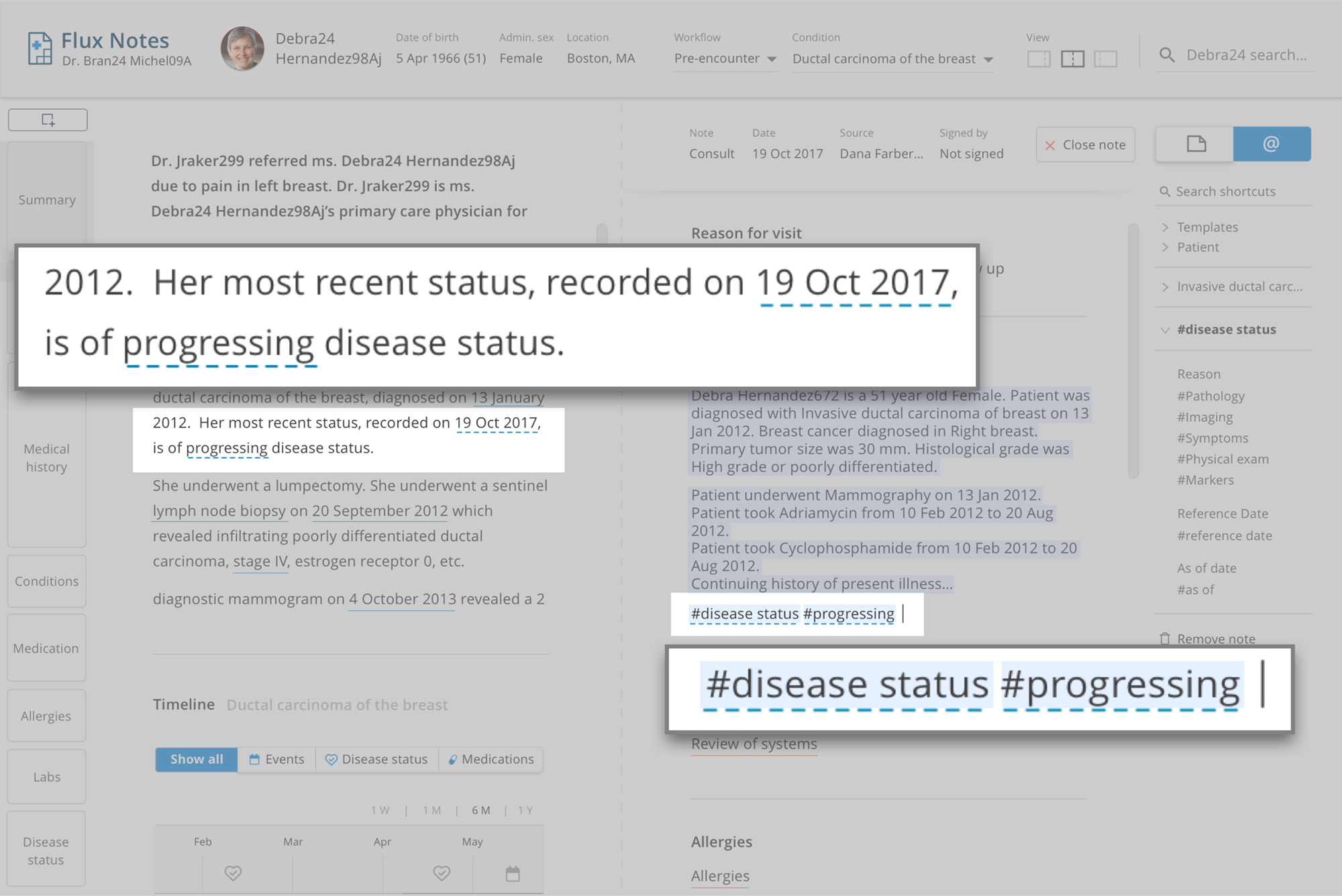
Capture structured data during note authoring
By typing hashtags before clinical vocabulary, the provider captures SHR data while they write their clinical notes. There is minimal obstruction of the clinician’s current method of documentation, with the added benefit of simultaneously entering data into the patient health record.
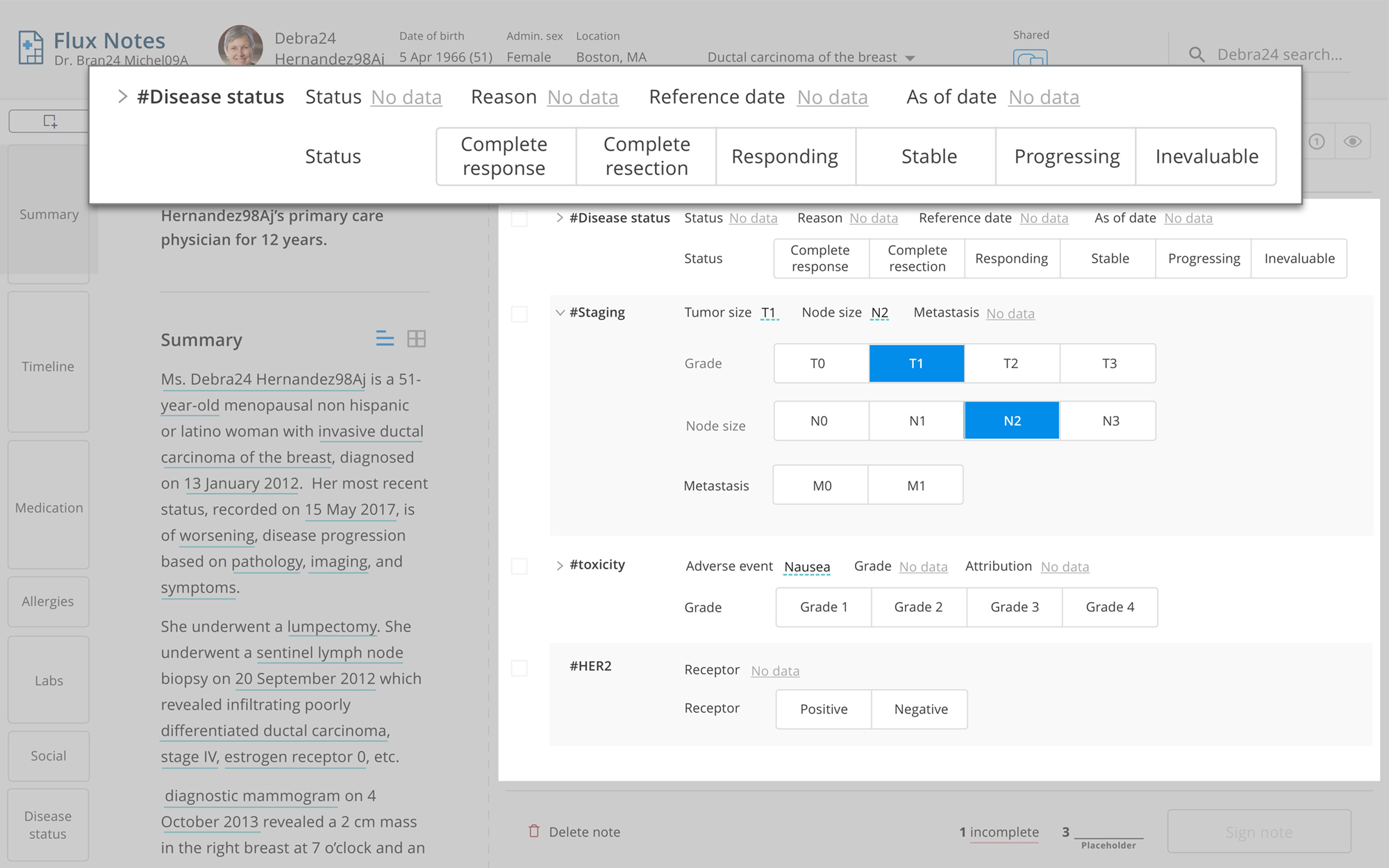
Simplified interface for data capture
A design that accommodates fast fat fingering and supports faster workflow for data capture allows clinicians to quickly enter information during face-to-face encounters with patients. The application then provides multiple modalities for capturing structured data: through an interface, or through typing hashtags.
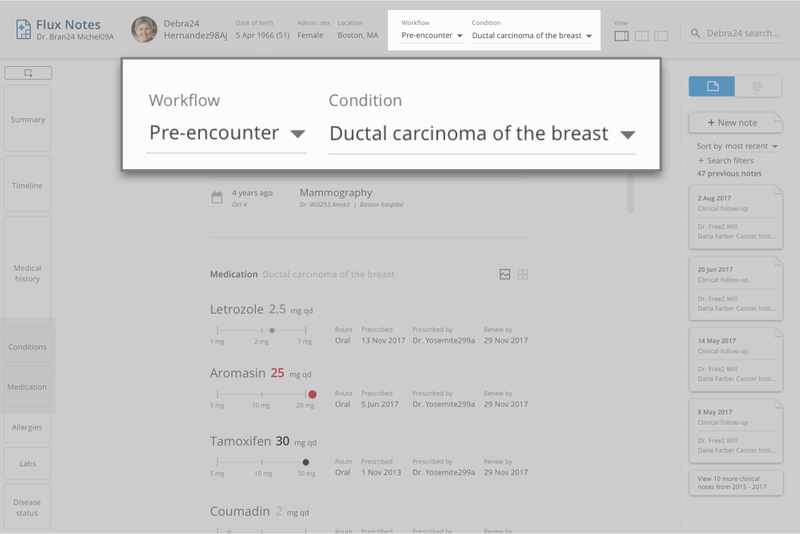
Personalize the display of information
Flux Notes generates views catered to the provider’s specialty, domain, task, and patient condition. These customized views prioritize information and declutter the user interface, improving on most EHR experiences by providing the information that providers want, when they want it.
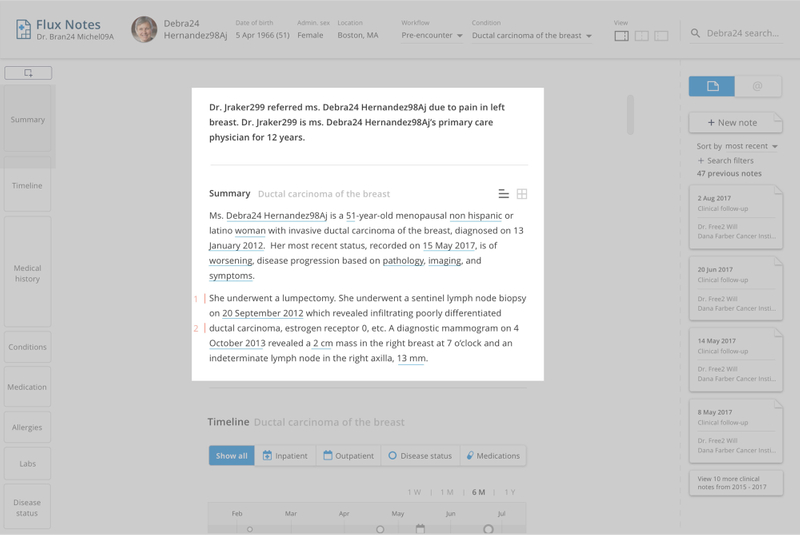
Make it human-readable
Displaying the health record through a narrative format rather than a sea of tables and tabs prevents overload and distraction, and is closer to how providers recall a patient’s history.
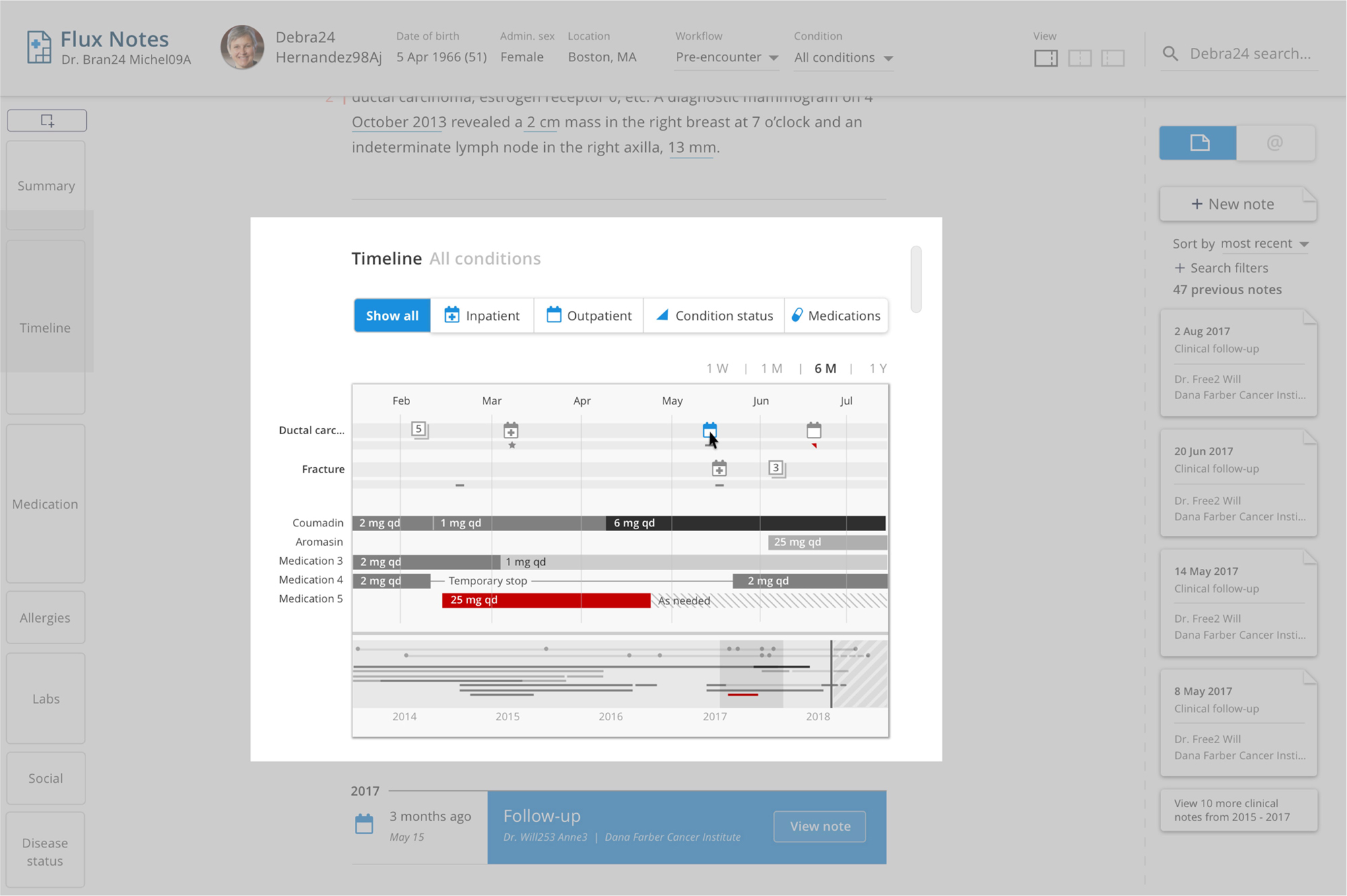
Use visuals to show clinical insights
Well-designed graphics can tell a story more effectively than words and reduce the need for patient information to be densely packed. The longitudinal patient view uses this approach to give the provider a big picture or focused view on a specific treatment or condition over a period of time. Medical events and medication history are presented over a scrollable timeline, comprising a patient’s total medical history.
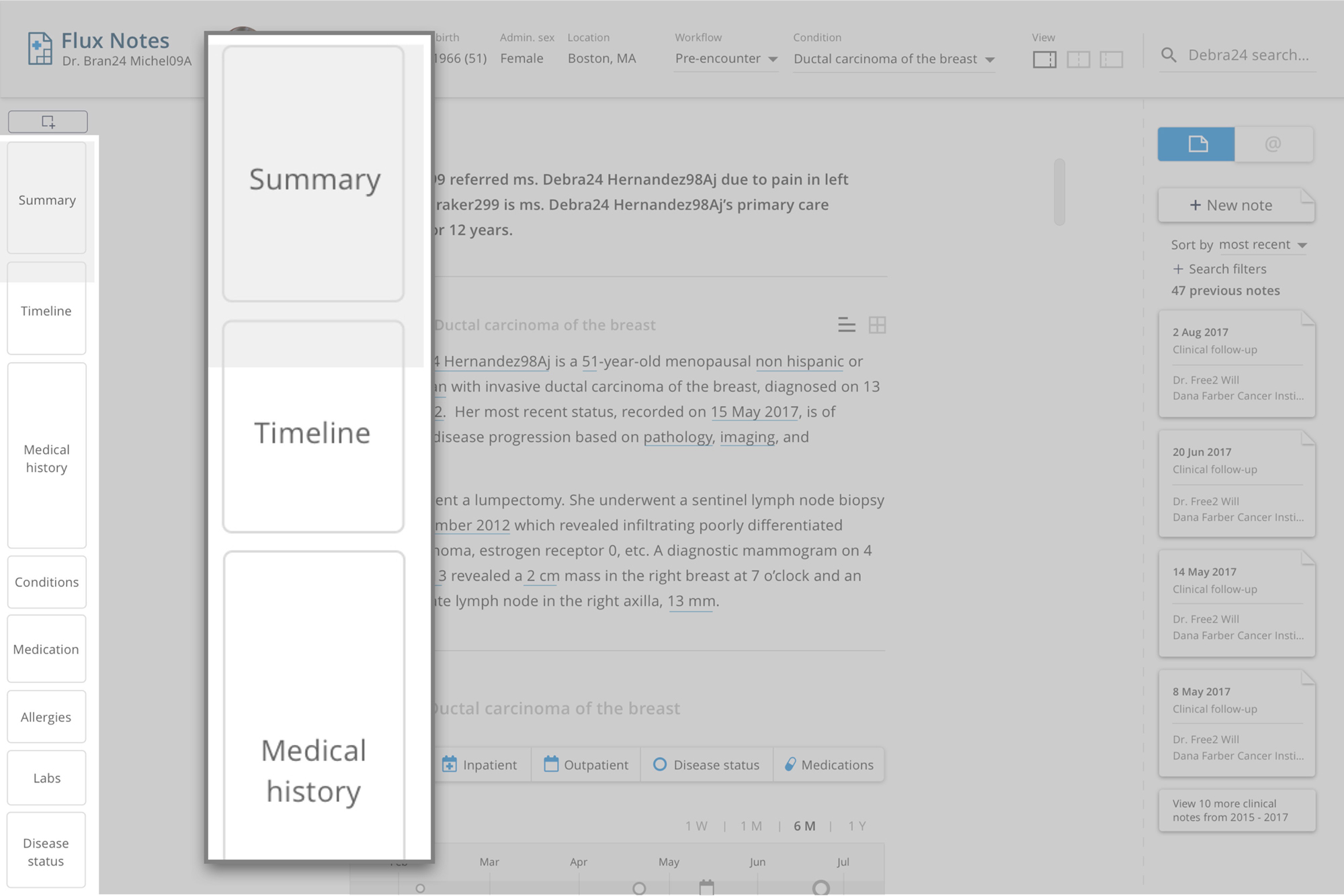
Explore the record using natural interactions
Instead of relying on tabs and clicks to navigate a complex patient record, a minimap allows the provider to quickly scrub or skip to different areas of the record. Every part of the patient record is just one interaction away.
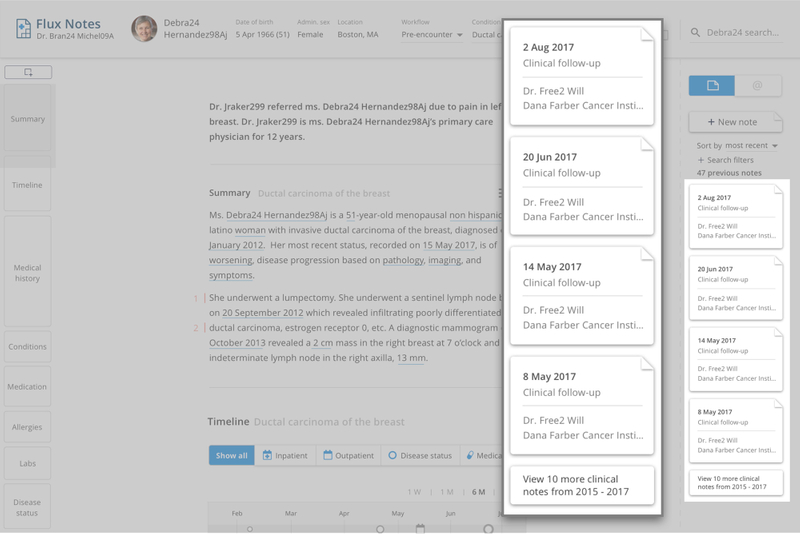
The note navigation allows the provider to quickly access previous clinical notes at all times, without closing the patient record view. This way, the provider can browse the record while simultaneously authoring or viewing notes, allowing for a more streamlined workflow.
Results
Gained partners in exploring innovative data capture methods
Flux Notes is on track to undergo user testing in mid-2018 at Brigham and Women’s Hospital in Boston, Massachusetts. The future goal is to implement this method of data capture for all oncology-based clinical trials. As we continue to iterate and develop Flux Notes, we are presenting the concepts at conferences such as HIMSS and Mass Bioinnovation. In 2019, voice interactions occurring in the encounter and as post-encounter noted will be incorporated for additional dimensions of data.
Supported the development of the Standard Health Record
In using the SHR as a health record data standard, Flux Notes became a prototype for interrogating the SHR in an interactive and clinical format. Demonstrating further value, Flux Notes helped to secure an additional year of funding and development for the SHR initiative.

